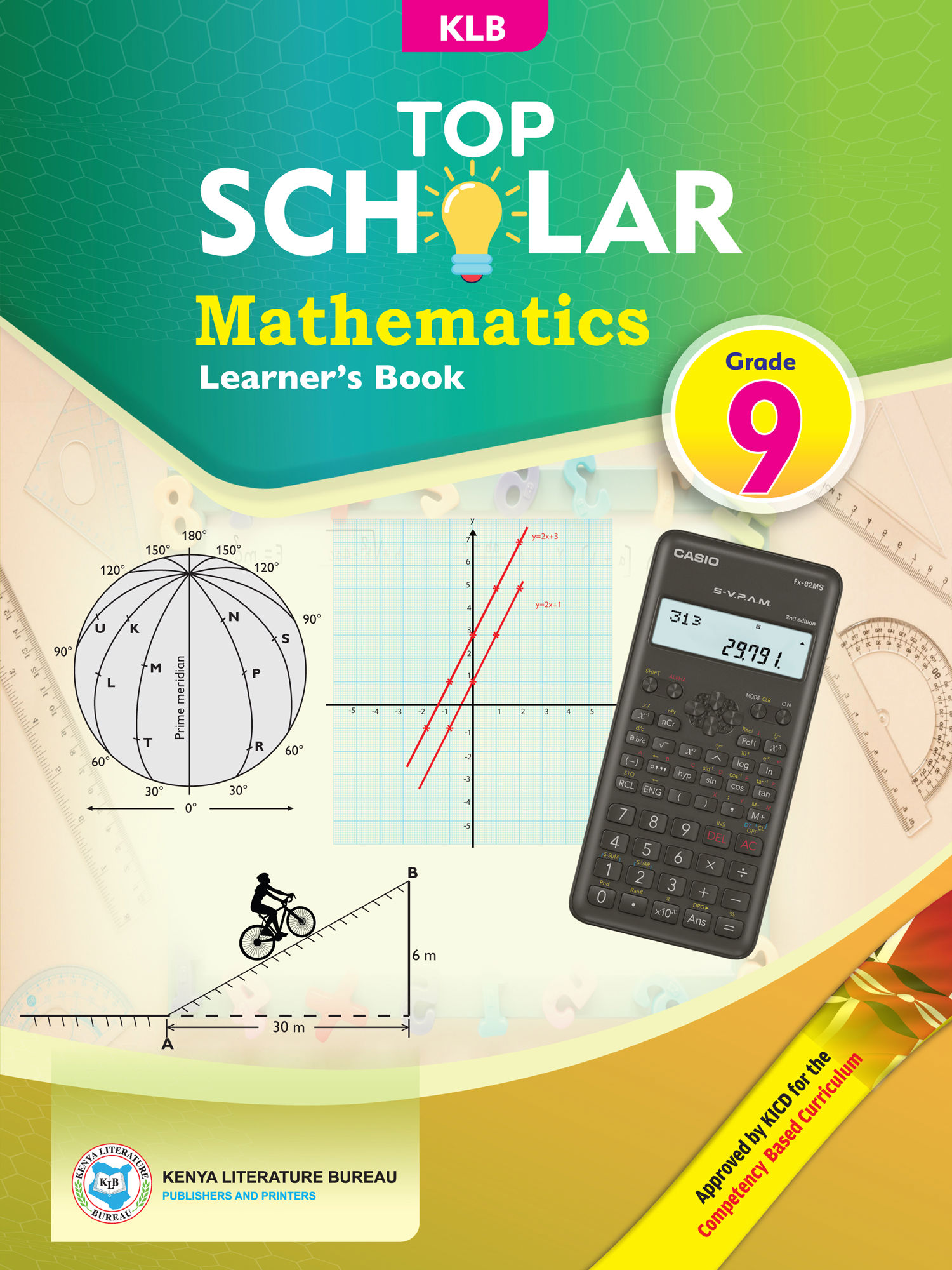
Authors
Vincent Odhiambo, Moses Maswai, Ziporah Muli, Jane Mbugua, Wycliffe OgemboExercises kit’s authors
Vincent Odhiambo, Moses Maswai, Ziporah Muli, Jane Mbugua, Wycliffe OgemboPublisher
Kenya Literature Bureau
Included in packages

-
The study kit contains 136 chapters and 1207 exercises of which 681 are in the chapters and 526 in the task exercises.
-
Authors
Vincent Odhiambo, Moses Maswai, Ziporah Muli, Jane Mbugua, Wycliffe Ogembo -
Exercises kit’s authors
Vincent Odhiambo, Moses Maswai, Ziporah Muli, Jane Mbugua, Wycliffe Ogembo -
Subject
Mathematics -
Grade
Grade 9 -
Kit's language
English -
Publisher
Kenya Literature Bureau -
Included in packages
1. Numbers. Integers
Lead |
Chapter |
|---|---|
| 1.1. |
Addition of Integers
Free chapter! |
| 1.2. | Subtraction of Integers |
| 1.3. | Multiplication of Integers |
| 1.4. | Division of Integers |
| 1.5. | Combined Operations on Integers in Different Situations |
